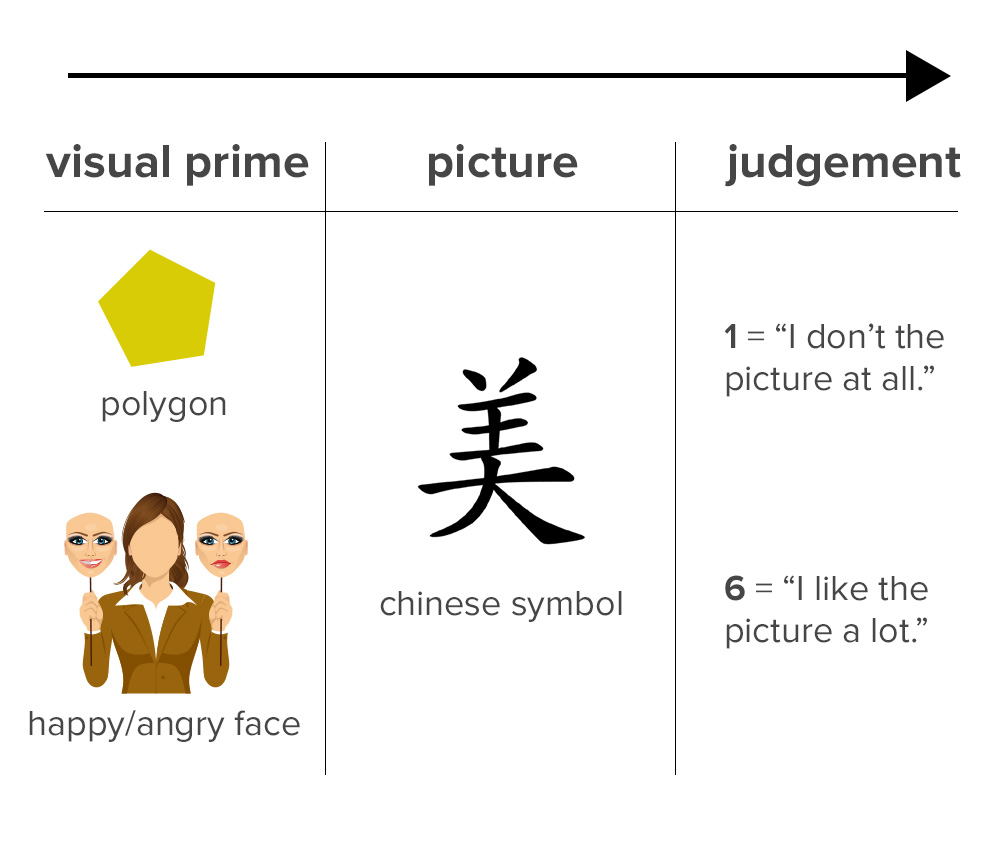Learning Hub | Mindful Marketing
Hacking First Impressions For Happy Customer Experiences
February 2, 2016 | Jon Teodoro

“You only get one chance at a first impression.”
It’s a very obvious statement, but in life, first impressions are everything. You could have ten million dollars in your bank account and a Bugatti Veyron in your garage, but if you rub a person the wrong way when you first meet them, chances are they probably won’t like you very much.
It’s no different in the business world. If you walk into Saks and encounter a sales person who looks like they’re having a shitty day, you will probably steer clear of that person. I know of zero people that are willing to tolerate a bad customer experience for any item, regardless of how much they want it.
This is because people largely base their decisions on emotions first, before logic.
Sure, we can be logical, when we are told that we need to think that way. However, when you need to make an on-the-spot decision, our emotions tend to take over.
Can You “Hack” First Impressions To Get People To Think Positively About Your Brand?
An experiment conducted in 1997 by three psychologists at the University of Michigan and Stanford University says that something called subliminal affective priming could help you “hack” your first impressions to get people to think positively about you, even before they’ve made a conscious judgement.
Piotr Winkielman (U of M, Ann Arbor), Robert B. Zajonc (Stanford University), and Norbert Schwarz (U of M, Ann Arbor), explored how priming people with different types of positive and negative stimuli affected their overall judgement.
The experiment was conducted on 63 undergraduates from the University of Michigan in Ann Arbor. The study examined if briefly exposing a person to a “happy” or “angry” face before showing them another unrelated photo had any correlation with their feelings about that picture.
To determine this, the participants were first shown one of the following three pictures: a polygon, a happy face, or an angry face. This visual prime was only shown for 10 milliseconds. Right after, they were shown a picture of a Chinese symbol for 2 seconds. Finally, the participants were given 8 seconds to judge how much they liked the Chinese symbol on a scale of 1 to 6, with 1 meaning, “I don’t like this at all.” and 6 meaning, “I like this very much.”
The experiment was conducted in two rounds. During the second round of the experiment, the researchers aimed to determine if people were subliminally “anchored” to feeling a certain way based on being exposed to a “happy” or “angry” face in the first round. Therefore, those who were exposed to a “happy” face in the first round were exposed to an “angry” face in the second round, and vice versa.

Summary of the subliminal affective priming experiment conducted by Winkielman, Zajonc, and Schwarz (1997)
What Did The Results of Experiment Tell Us About First Impressions?
The results of the experiment demonstrated the following:
- People that were shown a happy face first, liked the picture of the Chinese symbol significantly more than those who were exposed a neutral stimulus (picture of a polygon).
- People who were shown an angry face first, liked the picture of the Chinese symbol less than those who were exposed to the neutral polygon.
- Those who were shown a happy face in the first round, then shown an angry face in the second round, still liked the Chinese picture more than neutral.
- Those who were shown an angry face in the first round, then shown a happy face in the second round, still liked the Chinese symbol less than neutral.
How Does Apply To My Business?
The data tells us that even the smallest, subconscious details of first impressions matter. In the experiment, those who were exposed to a positive stimulus (a “happy” face) had a more positive opinion about the item that they were judging right afterwards.
Furthermore, those who were exposed to a positive stimulus still had a positive opinion about the item that they were judging, even if a negative stimulus was shown to them. This demonstrates anchoring effect of a first impression.
When customers walk in your door, visit your website, or meet one of your sales reps for the first time, that first impression sets the tone for all of the interactions that will happen after that.
An interaction that begins with positive cues such as a smile, strong handshake, or confident body language, could trump a stutter or brain fart in the middle of your pitch. On the flip side, a frown or a snarky attitude could make it very difficult for you to get on your potential customers’ bright side, even after you try to fix it.
Tips For “Hacking” Your First Impression
You don’t have to give away free stuff to get your customers to like you. Stick with the following basic tips to make sure you have a chance at a lasting positive first impression:
- Smile!
A study done by the University of Amsterdam says that if you greet people with a smile, they are more likely to smile back at you. What better way to start off a business relationship?
- Brush Up On Your Body Language
Posture, hand placement, and even the angle of your head matters, according to research done by Ohio State University. Good posture is correlated with higher levels of confidence, giving you that psychological boost needed to close the deal.
- Aim For 5 Star Reviews
There have been numerous studies done on how the presence of online reviews affects a customer’s buying process. Looking for more stars is easier than clicking and researching on each individual listing, and most people will take that shortcut.
Sources
- Subliminal Affective Priming Results Attributional Interventions – Winkielman, Zajonc, and Schwarz (1997)
- Effects of a Smile: Reciprocation and Compliance With a Request – Vrugt (2007)
- Body Posture Affects Confidence In Your Own Thoughts – Petty (2009)
- Examining the Influence of Online Reviews on Consumers’ Decision Making: A heuristic-systematic model – Zhang, Zhao, Cheung, Lee (2014)
[sc:30tipscta]
